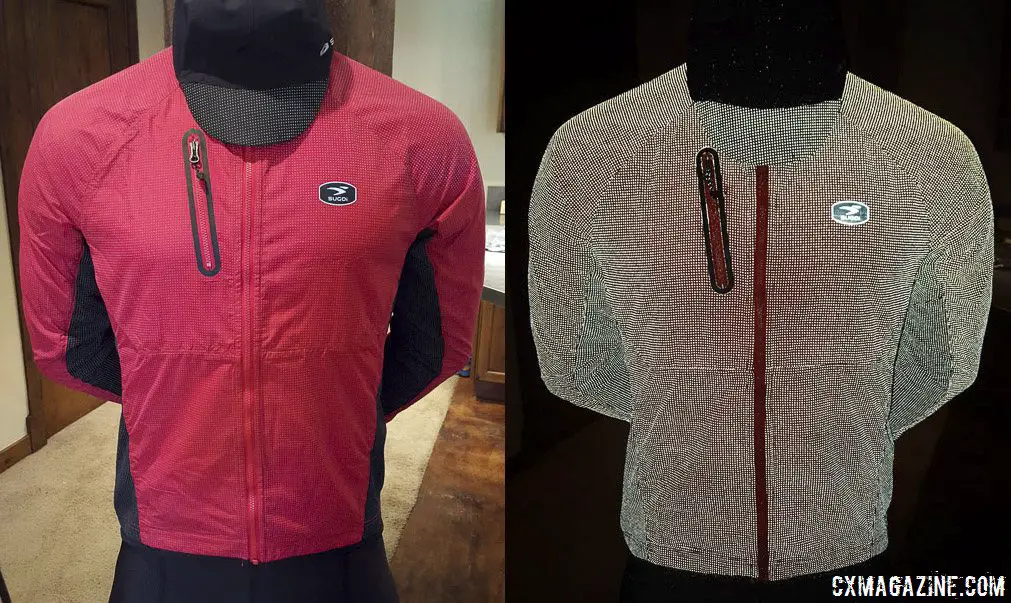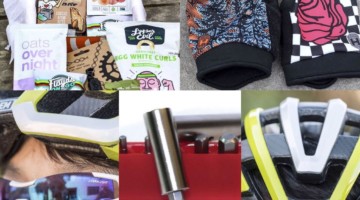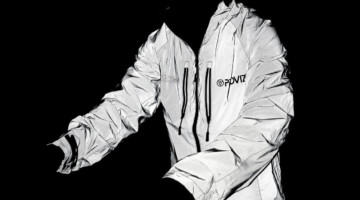While we enjoyed an extra hour of sleep over the weekend, thanks to the annual end of Daylight Savings, now we’re dealing with riding in the dark after work for the rest of the cyclocross season.
Sure, the couch or trainer are fine options when it’s dark and cold, but some of us still prefer riding outdoors.
What’s the best way to do it safely?
If you’re heading out after dark, you want to see and be seen. Today, we’ve got our resident eye doctor’s eye-opening, timeless advice on night riding, with some updates since the article was first published.
We’ll start today with some general tips below, and then follow this up with some specific product spotlights that brighten your appearance or outlook.
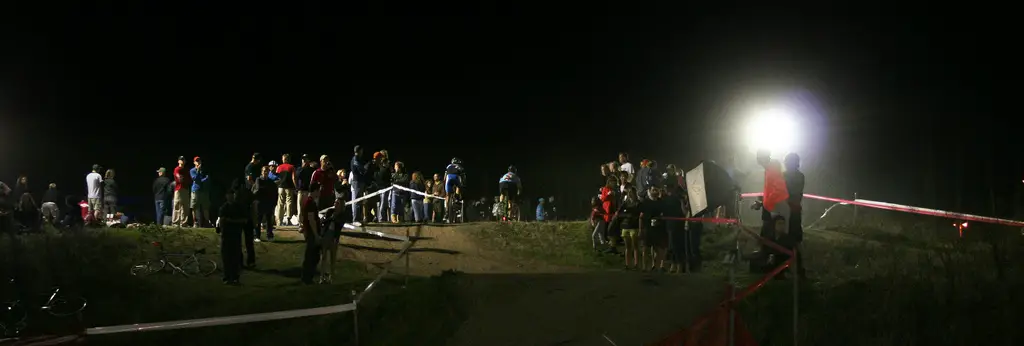
Training, racing, or cyclocross practice: You’ll likely need a good light to extend your season. © Cyclocross Magazine
Days are shorter and our lives are busy. How does training time fit into a day with already too few hours? You can train indoors on a trainer, or train in the dark of night. Most of us know the tedium of trainers, even if made entertaining by companies like Bkool and Zwift. Night riding can be a great alternative to staring at basement walls, but the idea of being on the road in the dark is intimidating to the uninitiated. Thankfully, new headlight and clothing technology make the night train safer and more comfortable than ever.
Considering your personal safety is paramount. Visibility, of the route and to motorists, is a priority. Course choice should consider obstacles not only on the trail, but in the surrounding area as well: crime rate, homeless encampments, etc. Be sure you reconnoiter the course and area in the daylight hours. Train with a partner and always be aware of your surroundings.
The Workouts
If you have long stretches of unimpeded road nearby, power intervals are a good night workout. If there is a grade, hill repeats, or over/under steady-state intervals are possible. Nearby features such as these can give you the freedom of the road, without the risk of being miles from home in the dark if things don’t go according to plan.
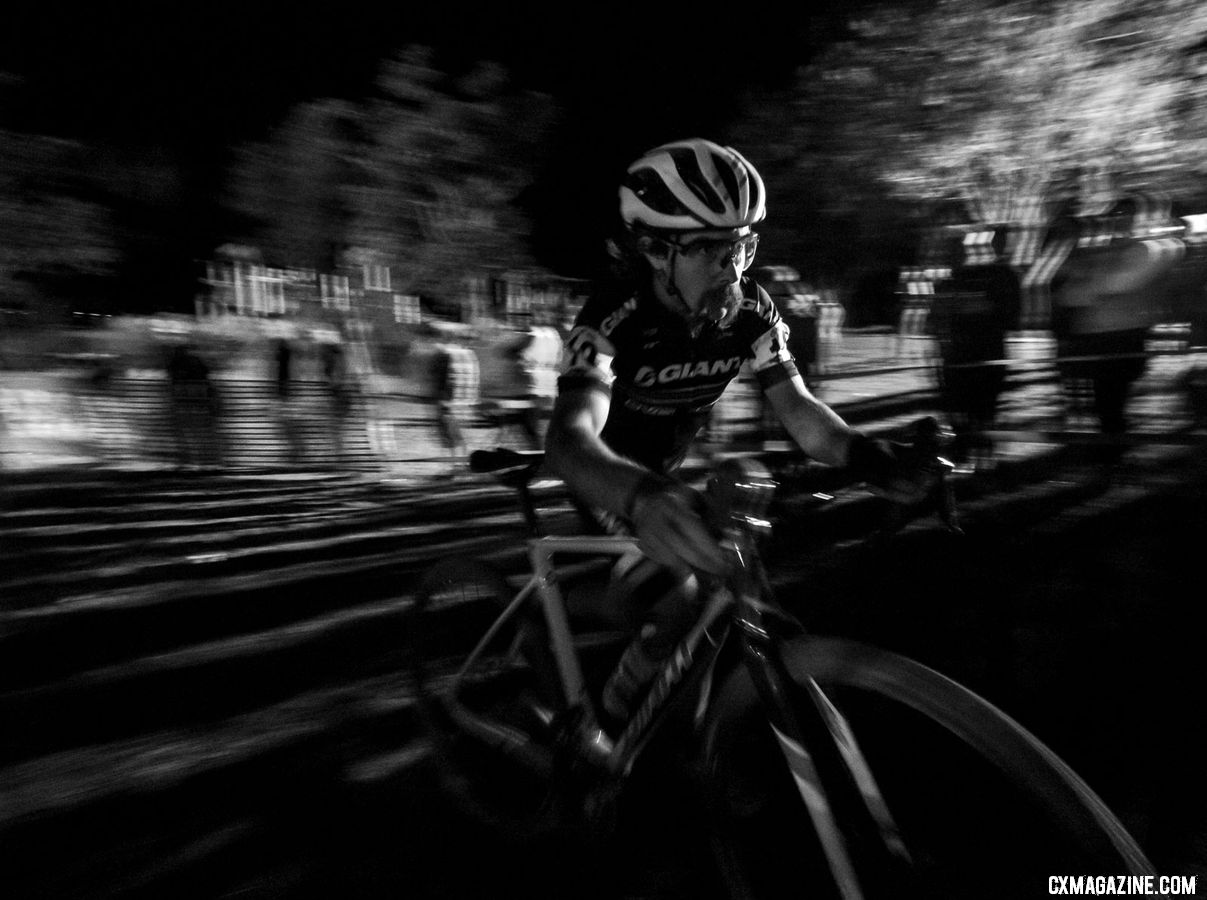
Former singlespeed national champion Tristan Uhl enjoyed some external lighting at RenoCross, but most of us need bright headlights to train at night. 2018 RenoCross men’s race. © A. Yee / Cyclocross Magazine
If you have a cyclocross course available, race-pace laps over varied terrain are invaluable, and in the dark your, skills are enhanced by the mere fact that you will learn to look beyond the texture of the track and flow better over the course.
Clothing
Use tough tires: changing a flat in the dark is no fun, and in urban areas, you can be vulnerable. Consider tubeless with sealant or sealant filled tubes and pay attention to tire pressure to avoid a pinch flat.
Reflective clothing is good to have for safety, and commute specific-tights, jackets, gloves and shoes are available and can be good for training in the relative cold of the night.
Nowadays, there are plenty of options to keep you visible at night without calling attention to yourself during the day. Sugoi’s Zap line of outwear falls in this group.
Such clothing keeps you visible at night, but doesn’t have to look reflective during the day.
Other options include IllumiNITE and Proviz garments (see our Proviz Reflect360 Cycling Jacket review here), but the important feature is a reflective material that keeps you visible when a car’s headlights hit you, so the car doesn’t.
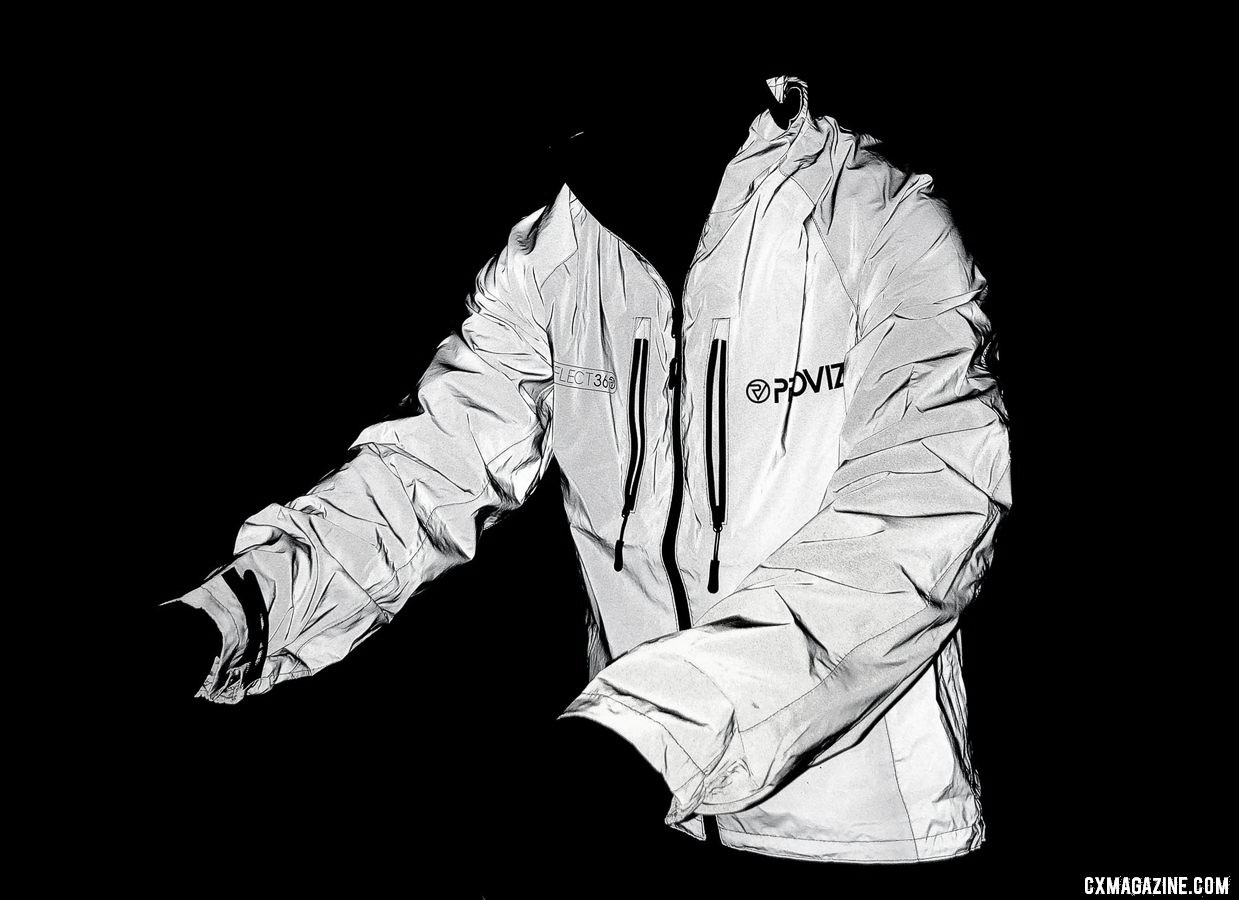
The Proviz Reflect360 Cycling Jacket adds more visibility than Illuminite or Sugoi Zap garments we’ve tested in the past. © A. Yee / Cyclocross Magazine
At the very least, wear a light-colored jersey, white or yellow. Additionally, you can wear reflective bands on on your ankles and wrists. If you have ever followed a cyclist in your car at night, you know that pedal reflectors and reflective ankle bands are amongst the most effective piece of equipment and could be a lifesaver in traffic.
Eyewear
Eyewear is one of my areas of expertise. Many riders prefer to use a yellow or amber tinted lens. While this gives the perception of greater contrast or even of brightness, any tint is a reduction of light transmission. At night your need for brightness outweighs any perceived contrast improvement, and perceived it is.
I can discuss the theoretical benefit of yellow filters in daylight conditions, but at night under mesopic or scotopic (optometrist speak for semi-dark or really dark) conditions, those benefits do not exist and the reduction of transmission is a liability. Get eyewear with clear lenses, and anti-reflection multi-coating is no doubt beneficial.
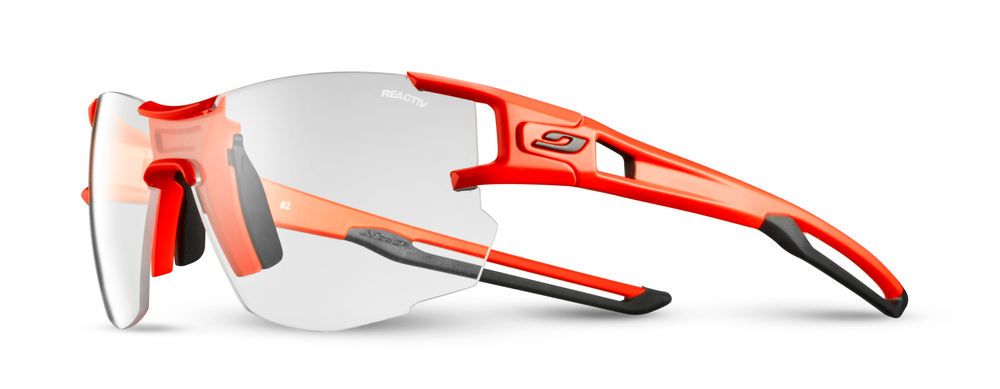
Julbo’s Reactiv photochromic lenses do an amazing job of protecting you on sunny days while still offering night riding protection.
If you’re riding from daylight into darkness, look for lightly-tinted photochromic sunglasses like the Julbo Reactiv Performance lenses. Such glasses can protect you in broad daylight, with just 12% light transmission, but then at night let 87% of the light through.
See the Light
What lights to consider? For years, my wife and I trained on the road at night with a converted Cateye Halogen. Now, modern LED systems are very bright with low heat output and low energy consumption, and are relatively affordable and durable compared to HID systems.
Do not rely on those commuter LED lights – you’ll need 300 lumens minimum to see at training speed. Brighter is better, though beam pattern matters almost as much, and now systems with claimed 1700+ lumens are available.
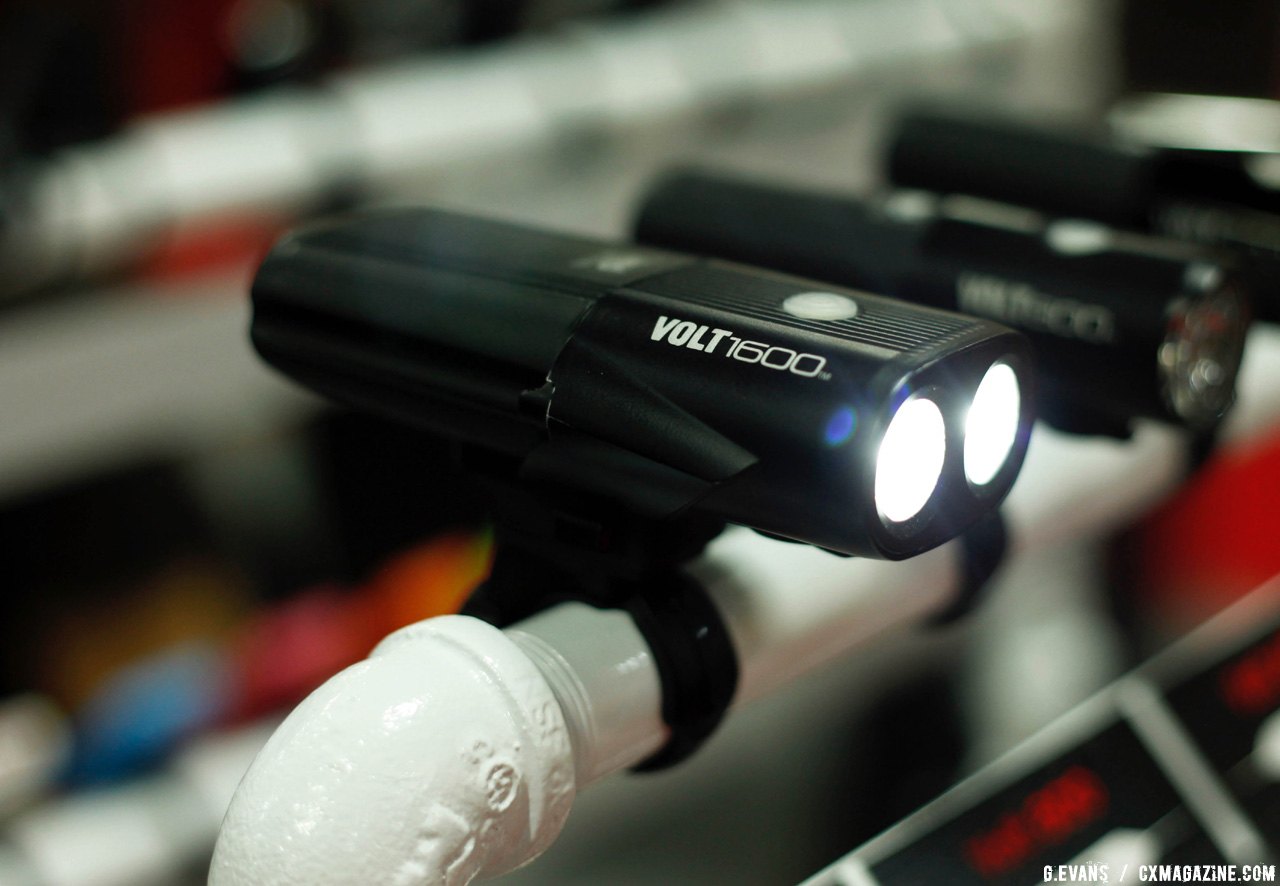
Cateye’s Volt 1600 is the second brightest light in their lineup, using dual LEDs to put out 1600 lumens at full power. The light is available now and retails for $220 USD. You can swap the battery for longer rides. © Cyclocross Magazine
Consider two headlights, one helmet-mounted and the other bar mounted. The helmet-mounted light allows you to see into corners and spot check your surroundings, just don’t look your training partners in the eyes. The helmet-mounted light also comes in handy to read your HRM or power meter, and to change a flat if you’re unlucky. The bar-mounted light affords texture information on the ground due to shadows that the helmet-mounted light won’t reveal. If only one light, I prefer a bar-mounted, but others may differ.
See some of our most recent bicycle LED headlight reviews.
A bright LED taillight (“blinkie”) is a necessity for the ride to and from the off-road venue, or if your night training is on the road. Brighter is better for the rear light since you will be dependent upon others seeing and avoiding you rather than the other way around. Get the brightest one you can find despite the size. Some, like the Cateye Rapid X2 Kinetic, even detect your motion and flash when you are slowing down. The battery power consumption of these is minimal, with a set of batteries likely lasting weeks.
Be wary of the fact that brightness declines as the battery power does. I’ve seen many bright lights in a dim state since the owner pays no attention to battery replacement until it ceases to flash. For safety, it is better to replace earlier than later. If you are training with a friend on the dirt and you are the leader, turn off the red flasher, as it can be annoying to the following rider. Just be sure to turn it back on when on the road!
Equipment we use presently:
- 700+ Lumens LED headlight
- DiNotte 200 AA-S as a helmet light $199
- Planet Bike Superflash 0.5 watt LED rear flasher, a Cycliq Fly6 rear light and camera, or a Cateye X2 Kinetic flasher.
- Reflective ankle bands
- Reflective gloves
Your LBS should have most of the above options, except for perhaps my Michael Jackson gloves. If not, you can browse on Amazon’s marketplace or other online retailers for all these accessories.
Want to go all out? You can add LED wheel lights for spinning visibility.
Be safe, see well and be seen. Happy riding.
Or view all bike light deals at JensonUSA.com and support our coverage.
Head-Mounted Lights
Consider two headlights, one helmet-mounted and the other bar mounted. The helmet-mounted light allows you to see into corners and spot check your surroundings, just don’t look your training partners in the eyes. The helmet-mounted light also comes in handy to read your HRM or power meter, and to change a flat if you’re unlucky. Plus, helmet-mounted lights can help keep your rear safe, like this one from ticc * Helmet Blinker – you’ll be spotted by drivers behind you. The bar-mounted light affords texture information on the ground due to shadows that the helmet-mounted light won’t reveal. If only one light, I prefer a bar-mounted, but others may differ.













